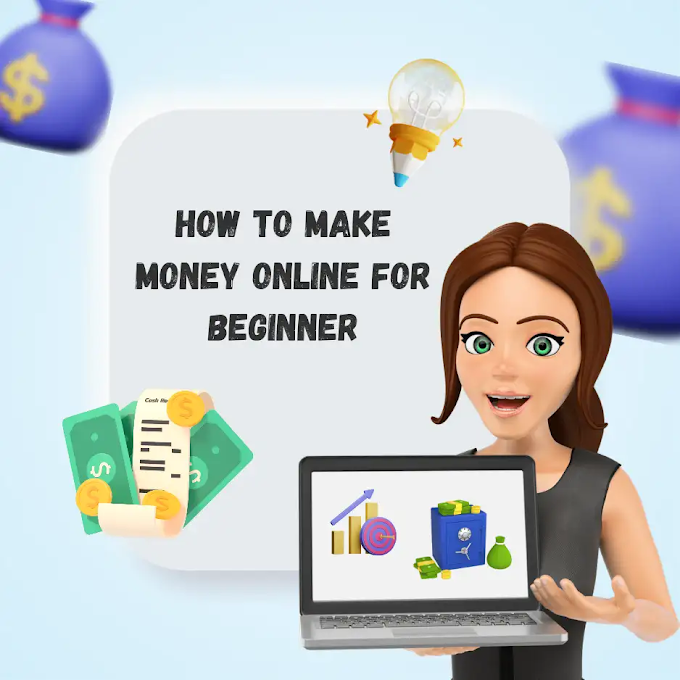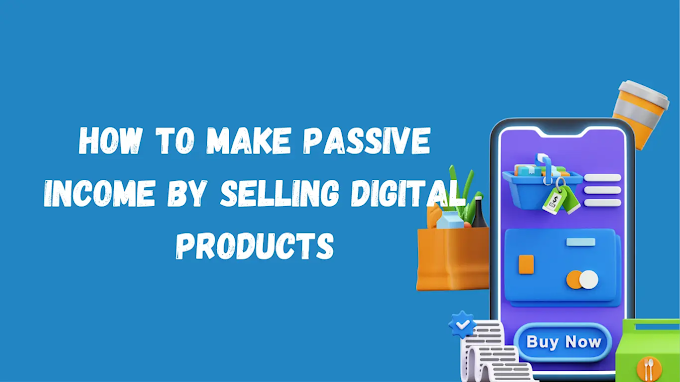In today's digital age, it has become easier than ever to earn a good amount of money every month by starting an online business. With various e-commerce models, dropshipping is very popular across the country to sell products online without any investment hassle. Through dropshipping business you will get commission from others by selling their products without any hassle. You don't need to invest any money to start a dropshopping business. You can earn $5000 per month by marketing on various social media by spending two hours a day behind it. If you've ever wondered how to start a dropshipping business for free and aim to earn as much as $5,000 a month, then this guide is made for you. Here, we'll walk you through each step of launching a successful dropshipping business on Amazon.
Understanding the Dropshipping Model
What is Dropshipping? Dropshipping is a retail fulfillment method where a store doesn’t keep the products it sells in stock. Instead, the seller purchases the item from a third-party supplier and has it shipped directly to the customer. The seller never sees or handles the product.
Why Dropshipping? Dropshipping offers several advantages:
1. Low Startup Cost: No need to invest heavily in inventory.
2. Easy to Start: Setting up a dropshipping business is straightforward and doesn’t require much technical knowledge.
3. Scalable: As the supplier handles fulfillment, scaling up is easier than traditional retail models.
How to Start Dropshipping for Free on Amazon and Earn $5,000 a Month । Daily Earning Guide
{tocify} $title {Table of Contents}
Step 1: Setting Up Your Amazon Seller Account
Types of Seller Accounts: Amazon offers two main types of seller accounts:
1. Individual Seller Account: Ideal for those just starting. It’s free to sign up, but Amazon charges $0.99 per item sold, along with other referral fees and variable closing fees. This is the best option for beginners testing the waters with fewer than 40 items sold per month.
2. Professional Seller Account: This account costs $39.99 per month but does not have a per-item fee. It’s recommended if you plan to sell more than 40 items monthly and want access to advanced selling tools.
Opening an Amazon Seller Account:
Here’s how to get started:
1. Visit Amazon Seller Central: Go to the Amazon Seller Central website and click on “Sign Up.”
2. Choose Your Account Type: Decide between an Individual or Professional account based on your anticipated sales volume.
3. Create Your Account: Provide your name, email, and create a password. Amazon will send a verification link to your email. Click on the link to verify your account.
4. Enter Business Information: Fill in your business details, including your legal business name, address, and contact information.
5. Tax Information: Complete the tax interview section to provide necessary tax details.
6. Set Up Your Payment Method: Provide your bank account details for Amazon to send your earnings.
7. Complete Your Profile: Upload a professional logo or image and write a brief description of your store.
Choosing the Right Account: For beginners testing the waters, the Individual Seller Account is a cost-effective choice. You can upgrade to a Professional Account as your sales volume increases.
Step 2: Adding and Managing Your Payment Account
Adding Your Payment Account:
Log in to Amazon Seller Central: Access your account by logging in to Amazon Seller Central.
Navigate to Payment Information: Go to the Settings menu at the top right corner and select Account Info. Then, click on Deposit Methods under the Payment Information section.
Add a Payment Method: Click on Add a Bank Account. Enter your bank account details, including your bank’s name, account number, routing number, and account type (checking or savings). Ensure the details are accurate to avoid payment issues.
Verify Your Bank Account: Amazon may require you to verify your bank account. Follow the instructions provided, which typically involve confirming small test deposits made by Amazon to your bank account.
Managing Your Payment Account:
Update Bank Account Information: To update your bank account details, go back to Deposit Methods under Account Info and select Edit next to the account you want to update.
Monitor Payments: Regularly check your Payments dashboard in Amazon Seller Central to track your sales and payments. This helps ensure you receive your earnings on time and manage your cash flow effectively.
Step 3: Selecting a Profitable Niche
Market Research: Start by identifying trending products and consumer needs. Use resources like Google Trends, Amazon’s Best Sellers list, and social media insights to gauge market interest.
Assessing Competition: It’s crucial to analyze the competition in your potential niche. Look for niches where demand is high, but competition is manageable. Tools like Jungle Scout or Helium 10 can provide valuable insights into market saturation and product performance.
Step 4: Finding Reliable Suppliers
Where to Find Suppliers: Platforms like AliExpress, SaleHoo, and Oberlo are popular choices for sourcing products. They offer a wide range of products, and many suppliers on these platforms are experienced with dropshipping.
Evaluating Suppliers:
Product Quality: Order samples if possible to check product quality firsthand.
Shipping Times: Ensure the supplier can ship quickly and reliably to your target markets.
Communication: Good communication is key. Choose suppliers who are responsive and willing to address your concerns.
Step 5: Setting Up Your Amazon Store
Product Listings: Your product listings are your primary sales tool. Here’s how to create compelling listings:
High-Quality Images: Use professional, high-resolution images that showcase the product from various angles.
Detailed Descriptions: Write comprehensive descriptions that highlight the product’s features, benefits, and uses. Incorporate relevant keywords naturally.
Pricing Strategy: Set competitive prices by considering supplier costs, shipping fees, and Amazon’s selling fees. A well-thought-out pricing strategy ensures profitability while remaining attractive to customers.
Step 6: Implementing Marketing Strategies
Amazon SEO: Optimizing your listings with relevant keywords is crucial for visibility. Use keyword research tools to find the most effective terms and phrases to include in your titles, descriptions, and bullet points.
Sponsored Ads: Amazon’s advertising options, like Sponsored Products, help increase your products’ visibility. These ads appear in search results and on product pages, targeting potential customers actively searching for similar items.
Social Media Promotion: Social media is a powerful tool for expanding your reach and driving sales. Here are the top platforms and how to use them effectively:
Creating a Page: Start by creating a Facebook Page for your Amazon store. Use it to showcase your products, share updates, and engage with customers.
Facebook Ads: Utilize Facebook’s targeted advertising to reach specific demographics, interests, and behaviors. Start with a small budget and optimize based on performance.
Groups and Communities: Join relevant groups and communities to engage with potential customers. Provide value by sharing tips, answering questions, and subtly introducing your products.
Visual Appeal: Leverage Instagram’s visual platform by posting high-quality images and videos of your products. Use Instagram Stories to provide behind-the-scenes looks and promote limited-time offers.
Influencer Marketing: Partner with influencers in your niche to reach a larger audience. Ensure they have a genuine connection with their followers for maximum impact.
Shoppable Posts: Use Instagram’s shoppable posts feature to allow users to purchase directly from your posts.
Creating Pins: Pinterest is ideal for products that are visually appealing or fit well into lifestyle niches. Create pins with high-quality images and links to your product pages.
SEO Optimization: Optimize your pins with relevant keywords to improve visibility in Pinterest search results.
Boards and Collections: Organize your products into boards and collections to make it easier for users to browse your offerings.
TikTok
Short Videos: Create engaging short videos showcasing your products. Use trending hashtags and participate in challenges to increase visibility.
Influencer Collaborations: Partner with popular TikTok creators to showcase your products in their videos, leveraging their follower base.
User-Generated Content: Encourage customers to create content featuring your products. Share the best ones on your account to build community and trust.
Step 7: Providing Exceptional Customer Service
Communication: Maintain clear and timely communication with your customers. Responding to inquiries and resolving issues quickly can lead to positive reviews and repeat business.
Handling Returns and Complaints: Have a clear and customer-friendly returns policy. Address customer complaints professionally and promptly to maintain your store’s reputation.
Step 8: Monitoring Performance and Making Adjustments
Data Analysis: Use Amazon’s Seller Central tools to monitor your sales performance, customer feedback, and product reviews. This data helps identify trends and areas for improvement.
Adapting Strategies: Based on your data analysis, make informed decisions to adjust your product offerings, pricing, and marketing strategies.
Step 9: Scaling Your Business
Expand Product Lines: As your business grows, consider adding complementary products to your catalog. Diversifying your product range can attract a broader customer base and increase overall sales. Research market trends and customer preferences to identify potential new products that align with your niche.
Automate Processes: Use tools and software to automate various aspects of your dropshipping business. Automation can streamline order processing, inventory management, and customer communication. Popular tools for dropshipping automation include Oberlo, Dropified, and Zapier. Automation saves time, reduces errors, and allows you to focus on strategic tasks.
Outsourcing: As your business scales, you may need additional support. Consider outsourcing tasks such as customer service, content creation, or social media management. Platforms like Upwork, Fiverr, and Freelancer offer access to skilled professionals who can help you manage and grow your business efficiently.
Optimize for Growth: Continuously evaluate your business performance and seek ways to optimize your operations. Analyze sales data, customer feedback, and marketing performance to identify areas for improvement. Experiment with new marketing strategies, pricing models, and product offerings to find what works best for your business.
Invest in Marketing: To sustain growth, invest in marketing strategies that drive traffic and increase conversions. Explore advanced advertising options, such as Amazon’s Display Ads or Google Ads, to reach a wider audience. Consider running promotions, discounts, and special offers to attract new customers and retain existing ones.
Build Partnerships: Collaborate with other businesses or influencers in your niche to expand your reach. Partnerships can include joint promotions, affiliate marketing, or co-branded campaigns. Building strong relationships with industry peers can open up new opportunities and drive additional sales.
Monitor Financials: Keep a close eye on your financials to ensure profitability. Track your expenses, revenue, and profit margins regularly. Use accounting software or hire a financial professional to manage your bookkeeping and financial planning.
Step 10: Withdrawing Payments
Understanding Amazon’s Payment Schedule: Amazon typically processes payments every 14 days. The funds from your sales are accumulated and disbursed to your bank account according to Amazon’s payment schedule.
Checking Your Balance:
Log in to Amazon Seller Central.
Go to Payments: Click on Reports in the top menu and select Payments. Review your Account Statements and Transaction View to see your balance and recent transactions.
Withdrawing Funds:
Automatic Deposits: Funds from your Amazon sales are automatically deposited into the bank account you’ve set up. You don’t need to manually withdraw funds; Amazon handles this as per their payment schedule.
In Conclusion,
Starting a dropshipping business on Amazon offers a flexible and low-cost entry into e-commerce. By carefully selecting your products, optimizing your listings, and implementing effective marketing strategies, you can build a successful dropshipping business with the potential to earn $5,000 or more per month.
Remember, success in dropshipping requires continuous learning and adaptation. Stay informed about market trends, keep refining your strategies, and be prepared to pivot as needed. With dedication and strategic planning, you can achieve your financial goals and build a thriving online business.







